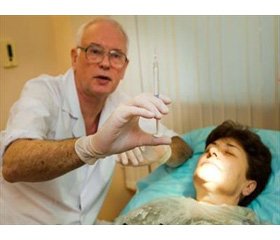Журнал «Медицина неотложных состояний» 8 (63) 2014
Вернуться к номеру
Clinical results of the use of injectable implant of hyaluronic acid and sodium succinate in Combustiology
Авторы: Korkunda S.V. - PhD, Associate Professor, Grigorieva T.G. - MD, Professor, Oleinik G.A. - MD, Professor, Department of Combustiology, Reconstructive and Plastic Surgery KhMAPE
Рубрики: Медицина неотложных состояний
Разделы: Справочник специалиста
Версия для печати
It is known that the process of wound healing and scar formation is directly dependent on the ability of tissues to synthesize sulfate-containing glycosaminoglycans. Modern medical technologies allow to realize a mechanism of direct introduction of hyaluronan in tissues with high needs.
Objective: To evaluate the efficacy and tolerability of injectable implant based on hyaluronic acid and 1.5% sodium cuccinat in pre-filled syringes produced by "Yuria- pharm" in burnt patients with donor wounds after autodermoplasty area of up to 5% of the body surface.Injectable implant based on hyaluronic acid and 1.5 % sodium succinate - colorless, transparent, viscous gel unstabilized non-animal hyaluronic acid, sterile, pyrogen-free, with a physiological pH.
Study Design. This clinical study was conducted as an open, comparative, single-group. In the clinical study included 50 patients with burns III A - III B level is less than 5 % of the body surface. All patients received a full course of treatment and were included in the analysis of efficacy and tolerability.The design of this study suggested a set of one group of subjects (the study drug and the reference treatment was used for each subject at the same time on the wound surface, conventionally divided into two equal parts).Treatment was started immediately after the autodermoplasty. Donor wound conventionally divided into two equal parts. Along the perimeter of half donor wound (Zone A) injected intradermally in a volume of the implant 1 - 2 ml (depending on the area of wound). The dose is administered as follows: 1-2 ml depending on the size of the wound immediately after surgery and after 3 days. The other half of the donor wound (Zone B) was treated with the standard protocol: the entire surface of the wound was superimposed sterile air and held drying fan heater to form a dry scab.A visual assessment of the burn wound into account the following parameters:
- Surface area wounds, as% of the body surface;
- Parameters describing the repair process (the severity of inflammatory changes, the nature of epithelialization, the degree of epithelialization), expressed in points 0-3;
- Parameters that characterize the pathological scar formation (intense itching of the skin in the area of the wound, the intensity of the color of the skin, uneven skin surface), expressed in points 0-3.Treatment was continued until complete epithelialization of donor wounds. At the end of treatment was assessed an average duration of treatment in groups.The survey results were subjected to statistical analysis.
Сonclusions. Injection implant based on hyaluronic acid and 1.5% sodium succinate in a pre- filled syringes produced by "Yuria-pharm" on the effectiveness of treatment is superior to the standard donor wounds after autodermoplastyand helps to reduce: а) the duration of treatment; в) the activity of the autonomic tissue repair inherent pathological scar formation, well tolerated and does not cause side effects of intradermal injection of donor wound on the perimeter and can be recommended for medical use as a means of optimizing the treatment of wound defects at the level of papillary and reticular dermis area of up to 5% of the body surface.

